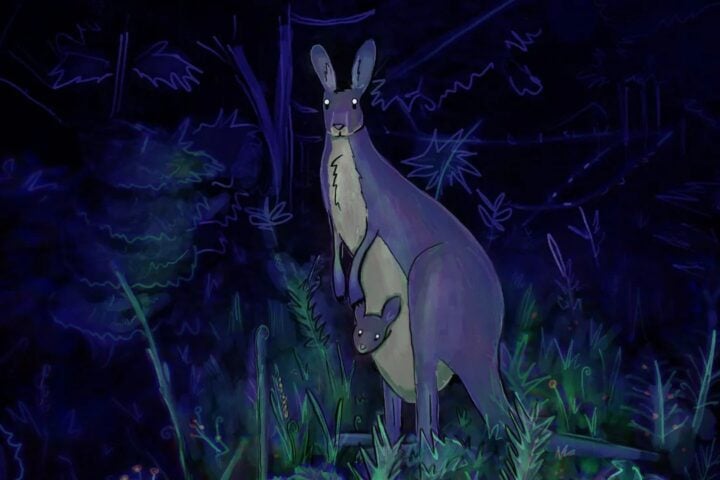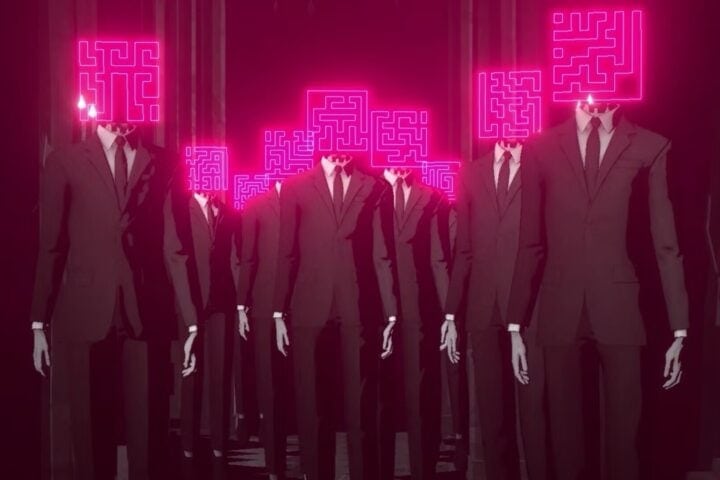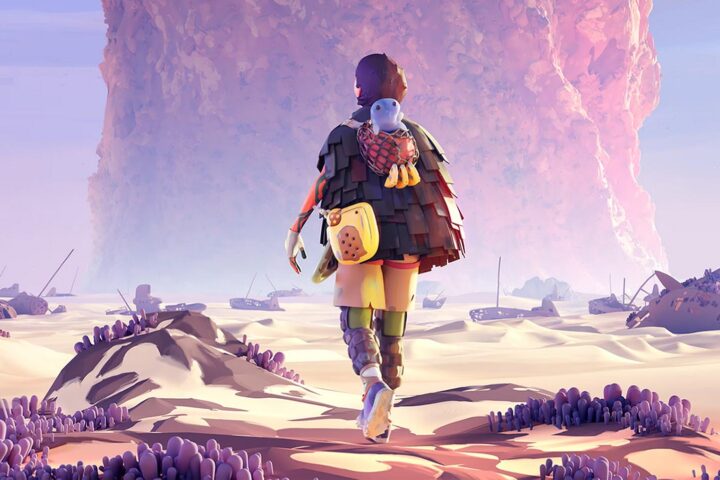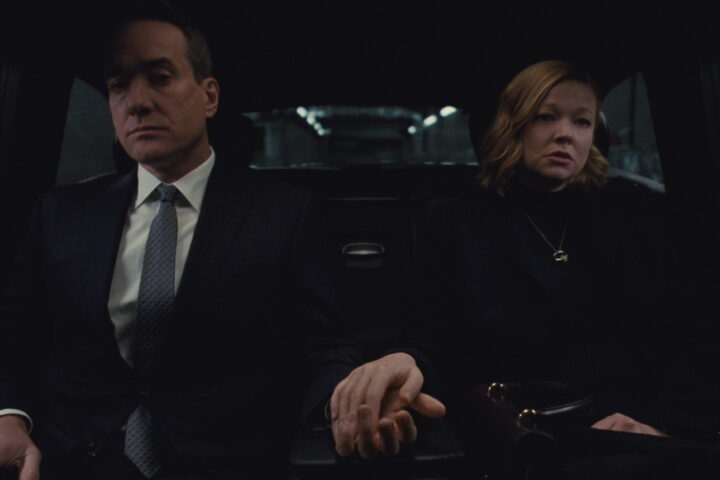On the surface, 2023 feels like a backslide. At the very least, a rather sizable number of the year’s best gaming experiences either look or act like early-to-mid-2000s ones. What’s magical about the year so far, though, is how many of those experiences are winning examples of unfinished business being taken care of. Indeed, many of the titles on our list of the best games of the year so far prove that developers set out to perfect some old, untapped ideas, putting in careful, meticulous work to make them shine their brightest.
So, if the aughts are back with a vengeance, we aren’t complaining. Of course, the year in gaming has also made room for the new and powerful, and we’ve been thrown a few stellar curveballs. That is, developers are taking wild swings that could only ever have been possible at this particular period in time, and with the tools at their disposable, so as to ideally serve an audience that’s hungrier than ever for alternatives to the tried and true.
Even just six months into the year, the gaming world is bursting with surprises, and these 15 games look to be the tip of a rather astounding iceberg. Justin Clark
Bayonetta Origins: Cereza and the Lost Demon (PlatinumGames)
Bayonetta Origins: Cereza and the Lost Demon presents itself like a storybook, with lush, watercolor-y illustrations of a cursed forest to lose oneself in and mischievous fairies to outwit in combat and environmental puzzles. And it’s a page-turner of sorts, with something unexpected and inviting around every corner, from a beautiful, dark, twisted amusement park of fiendish delights that are hard to tear one’s eyes away from to pockets of fairy illusions that keep you guessing as to what’s real. Bayonetta Origins ensures that exploration and combat is kept fresh and compelling with the introduction of new elemental powers every few hours, but it’s also elevated by the unlikely friendship between Cereza, a young witch, and Cheshire, the Inferno demon she accidentally bonds with. By having players control both characters at once, the game makes clear how our differences can make us stronger—and as with all dark fables, the cooperative warnings are well-worth the emotional rollercoaster along the way. Aaron Riccio
Darkest Dungeon II (Red Hook Studios)
Despite all the talk of punishing difficulty and realistic trauma simulation, something about Red Hook Studios’s Darkest Dungeon always felt a bit like comfort food—tried-and-true dungeon crawling with an almost sentimental attachment to a grimdark aesthetic, perfect for luxuriating in on a rainy weekend or a long road trip. How apt, then, that Darkest Dungeon II arrives as a cross-country trek, albeit in a horse-drawn carriage traveling through more treacherous environments than, say, Iowa. While the emphasis on the interpersonal is apt for a game that’s more road trip than dungeon crawl, it also makes it a decidedly more hopeful experience than the first game, as it leaves the door open for your adventuring party to face seemingly insurmountable odds and come out the other side stronger. There’s also more comedy and just plain joy in knowing that as intimidating as all those monsters may seem, your biggest challenge is getting your ragtag band of rascals to stop bickering and get along. Mitchell Demorest
Dead Space (Motive Studio)
The Dead Space remake is extremely shrewd about how it’s tinkered with the bones of its forebearer. And most of that attention has been paid to the massive planetary mining ship at the center of it all, the USG Ishimura, whose distress call brings our formerly silent protagonist, Isaac Clarke, and his support crew to the ass end of space to be tormented by all sorts of frights. The mark of a great horror game is one that can maintain fear no matter how armed and dangerous your protagonist is. The original Dead Space didn’t need much help in that regard, and its big “cut off their limbs” mechanic remains a thrilling and unique one even in this remake. Between the new graphical fidelity, the enemies’ offense and defense moves, and the built-in dynamic sense of suspense, the game pushes things up just enough to keep the thrills coming hard and heavy without numbing the player over a couple dozen hours. Clark
Diablo IV (Blizzard Entertainment)
Right out of the gate, Diablo IV allows for unprecedented freedom through the ease of its character creation and upgrading systems. Optimizing the amount of damage a character can do using the combat abilities unlocked is also extremely satisfying, as is exploring the different classes. It helps that the bleak and dark world so effectively cloaks players in foreboding darkness. But you don’t have to face adversity alone, as the game boasts well-implemented multiplayer options where joining friends or finding random players online to play co-operatively with is relatively effortless. Playing with others expands on Diablo IV’s already rich mechanics, as skills that aren’t as beneficial while playing alone can make a big difference in a co-operative experience, especially during the game’s large-scale, limited-time events, and the chaos of the PvP zones offers a different kind of challenge altogether. Ryan Aston
Hi-Fi Rush (Tango Gameworks)
The look of Hi-Fi Rush might inspire warm, fuzzy feelings of nostalgia for the gone-but-not-forgotten Jet Set Radio games, and it plays like the kind of beat-’em-up gem that Clover Studios might’ve pumped out as a follow up to Viewtiful Joe. But just under the surface of the beautiful and glossy cel-shaded aesthetic, snappy dialogue, and winking satire is a deep-seated anger. The game is profoundly aware of how artistic dreams and creativity get melted down into the grease that makes capitalism’s gears turn. It may look and often act like a Saturday-morning cartoon, but the second it has Chai taking down giant capitalist mech warriors with a makeshift guitar to the beat of Nine Inch Nails songs, it reveals the wild, rebellious cyberpunk in its heart. Clark
HROT (Spytihněv)
There are many games that trade on the key-searching heyday of ’90s shooters, but there’s only one HROT. Solo developer Spytihněv has crafted a relentlessly brown-hued Soviet odyssey through Czech landmarks in the midst of an unnamed ’80s disaster. Blazing through its maps of concrete architecture and Cyrillic signage feels a little like watching a mind unravel, with gun-toting goons vomiting through their gas masks as they amble alongside images both sinister and broadly satirical (sometimes both): floating clone Lenin heads, a Grandma statue, and a horse that’s also wearing a gas mask. When the game’s first episode released into early access on 2021, HROT already felt fully formed, and the level design has only escalated in ambition, littered with trap doors, false walls, and strange interactive objects. Now complete, the game emerges as a persuasive argument for the enduring power such a distinctive setting can offer. Steven Scaife
The Legend of Zelda: Tears of the Kingdom (Nintendo)
In many ways, The Legend of Zelda: Tears of the Kingdom finds the Legend of Zelda series at its most conservative. But the mechanics and design ethos so intently preserved from Breath of the Wild remain an enormous departure from series formula, and the sequel’s additions are in service not of retreading its predecessor’s terrain, but of evolving it, as well as altering how we perceive the Hyrule landscape. Even the simple ability to throw items other than your weapons has huge reverberations for the player experience, especially when combined with newfound abilities to pick up objects and fuse them together. The triumph of Tears of the Kingdom is how it drives the player to experiment at every turn. The intuitive sandbox puzzling drives you to search for solutions from tools laid out before you or the makeshift weaponry you’ve brought along, reaping rewards as well as hilarious consequences. Scaife
Octopath Traveler II (Square Enix and Acquire)
Think of Octopath Traveler II as a dim sum of RPG storytelling, a collection of eight savory novellas. Though there’s an epilogue of sorts that more traditionally links together the eight playable characters, their stories are until that point standalone. The game’s eight stories have different stakes, from becoming a dancing star, to avenging the murder of one’s family, to even taking down capitalism. And the boss fights demonstrate Octopath Traveler II’s finest and densest storytelling feature: its 2D-HD pixel art. The game presents itself with the confidence and experience of a deluxe guided tour, marking all the key spots for you to visit but also encouraging you to wander off the beaten path. It’s utterly engrossing without ever feeling overwhelming, and every system feels fine-tuned for maximal enjoyment. And with so many different experiences in one package, it’s a great game to get lost in eight times over. Riccio
Pizza Tower (Tour De Pizza)
Imagine someone turning a Mr. Bungle album into a fully playable Wario Land mod, and then someone drops a piping hot Domino’s pizza laced with psilocybin mushrooms on the hard drive. Games based on Ren & Stimpy, Beavis & Butthead, and Aeon Flux exist, but few have managed to so thoroughly capture that unnerving, purposefully sloppy scribblepunk look and ethos of early-’90s late-night MTV quite like Pizza Tower, and even fewer that take things to such psychotic visual and conceptual extremes. Every single meticulously hand-drawn frame feels like a hyperkinetic extension of a hilariously distressed mind, and yet, somehow the game manages to stay on the side of the gloriously absurd rather than gross. The real surprise, though, is that to look beyond its conceptual weirdness is to find that Pizza Tower is a legitimately well-crafted, endlessly replayable platformer with a focus on speed, level memorization, and oddball bespoke powerups, underscored by an eclectic banger of a soundtrack. Clark
Resident Evil 4 (Capcom)
The new Resident Evil 4 knows what worked in the original and makes some smart tweaks for better cohesion between the mechanics. And the developers were ruthless about killing fan darlings when it came to some of the game’s most memorable but tonally dissonant moments. The idea that the aristocrats of Spain will use any means necessary to keep a docile status quo isn’t exactly the thrust of the narrative, but the environmental lore scattered throughout Resident Evil 4 has just the right touch of venom against the ruling class to make that aspect of the story come across stronger than in the original. That narrative strength is bolstered by a far less tin-eared script than that of the original, a graphical upgrade that goes hard on gothic atmosphere and dread, a well-implemented upgrade system with a new-and-improved ornery British merchant (though the recently introduced optional microtransactions are a black mark against him), and creatures that still have a few unforeseen surprises up their sleeves. Clark
A Space for the Unbound (Mojiken)
The central mechanism of A Space for the Unbound is a magical red book that allows one of game’s main characters to “dive” into the hearts of troubled citizens. There, their feelings and problems manifest as visual metaphors, which can in turn be interacted with and solved in classic adventure-game style. This pixel art game’s prologue makes his specific type of manipulation even more explicit: Atma’s power is to edit. It’s only appropriate, then, that this sumptuous and at times surreal game feels so tightly streamlined, a seven-hour slice of life across a bustling four-block span of a fictional Indonesian city in the 1990s. Nothing about A Space for the Unbound is wasted. Even the optional fetch quests are designed to get players to run back and forth across the town, to familiarize themselves with its uneven streets and residents, and to remember where they may have once seen a bitter melon or a discarded bike, should they ever encounter someone down the road in need of one. Riccio
Star Wars Jedi: Survivor (Respawn Entertainment)
The main thrust of Star Wars Jedi: Survivor’s story is about Cal Kestis—a little older, a little wiser, but already a lot more tired than he was in Fallen Order—being caught between the determination to keep fighting a losing war and finding a convenient hiding place for those incapable of the kind of resistance that this war demands, and the game makes a strong case for both courses of action. It’s not entirely wall-to-wall grim, as there are plenty of snappy, funny bits of dialogue, as well as some truly inventive and breathtaking alien landscapes and creatures. There’s also physical humor—light moments where you get to literally stop and smell the space roses. There’s even a few spare, surprisingly well-executed moments of romance sprinkled throughout. But never once does the game let you forget that it could all come crashing down at any moment, and when it does, it’s astonishing in how effective and brutal it is. Clark
Street Fighter 6 (Capcom)
Street Fighter 6 hits hard, and in ways that the series hasn’t since the magnificent Street Fighter III: Third Strike back in 1999. That’s more than a shallow comparison, because even more than Third Strike, Street Fighter 6 goes all in on its stunning neon-graffiti aesthetic, whose wild stylings are underscored by a hip-hop- and acid jazz-infused soundtrack that makes the game feel more like a semi-photoreal Jet Set Radio than a Street Fighter experience. But that’s just on the surface, because this is a game that successfully channels the halcyon days of Street Fighter’s arcade dominance, and it’s on an adrenaline-fueled quest to get everyone hyped to get back into a ring where they all belong. This is the most feature-rich, welcoming, and inclusive package ever crafted for a fighting game—a stylish reassertion of creative dominance for the series that started it all, and an endlessly rewarding new foundation for its future. Clark
Tchia (Awaceb)
Sometimes all it takes to make a good platformer is one exciting, well-executed ability recontextualized over the course of a few hours. Awaceb’s action-adventure game Tchia, which is inspired by the Pacific nation of New Caledonia where the developers grew up, is only helped by having two. First is the power most prominent in the game’s marketing, with which you can jump into the body of just about any nearby wildlife and jump or swim (or poop) to your heart’s content. Second is your ability to climb to the top of any tree and sway back and forth a few times before jumping off and slingshotting a few hundred feet through the air. There’s also a welcome side helping of immersive cultural education within the game’s often gorgeous rendition of New Caledonia, but it’s the wild, surprising, laugh-out-loud funny movements that propels you through a campaign that doesn’t overstay its welcome. Demorest
Wo Long: Fallen Dynasty (Team Ninja)
From moment to moment, this jumpy, slightly messy Sekiro riff comes off a bit like Souls-like junk food. It’s fun enough, but it wouldn’t be nearly as notable if it weren’t for the idiosyncratic structure of its levels. Each one requires you to start a character-leveling process over almost from scratch. They also feature a bunch of checkpoints that increase the minimum level you’ll fall to if you happen to be killed by, say, a leaping tiger, a somersaulting porcupine, or a very angry man with a stick. The upshot is that exploration, even in its most underhanded sprint-past-every-enemy form, is not only a viable way to avoid tough combat encounters, but the best method for tackling the game’s toughest challenges. Unless you have the patience to dig through the in-game manual a couple of times yourself, these systems may frustratingly remain a mystery, but sometimes a little opaqueness is the price you pay for experimentation. Demorest
Since 2001, we've brought you uncompromising, candid takes on the world of film, music, television, video games, theater, and more. Independently owned and operated publications like Slant have been hit hard in recent years, but we’re committed to keeping our content free and accessible—meaning no paywalls or fees.
If you like what we do, please consider subscribing to our Patreon or making a donation.





